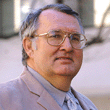Survival guide: David Boyd, director of research and development operations, DHS' Science and Technology Directorate

David Boyd oversees the Homeland Security Department's SafeCom wireless interoperable communications initiative.
David Boyd oversees the Homeland Security Department's SafeCom wireless interoperable communications initiative. SafeCom's goal is to help federal, state and local public safety agencies improve their response capabilities through more interoperable communications. This year, SafeCom will use part of its $22 million budget to fund projects in several jurisdictions testing new communications technologies. Boyd's 20 years in the Army and his experience as director of science and technology for the National Institute of Justice made him a logical choice for the position. He recently talked with Washington Technology Staff Writer William Welsh about Safecom and its plans. Why is Project Safecom issuing a broad agency announcement for interoperability?As part of our effort to build a national architecture and to build relevant standards, we are studying technologies that haven't been looked at in this environment but are, in fact, going to fit here, such as voice over IP systems. We need to look at them in a real environment in the field to do two things: Determine whether they are relevant as candidates for standardization, and assess the standards against some of the more challenging technologies to determine how to develop the standards. We're looking at those that begin to push the edges and address interoperability as a key part of their functions. Safecom has set aside $6 million for "operational field evaluation." Is that enough? It will be for this initial element. Obviously, we are going to try to address the key technologies that are out there now. You really aren't looking at a large number of new approaches yet. We are hoping that part of what this will do is attract enough interest to seed industry, universities and research labs to begin looking at alternatives. Will you get more funding next year for more testing? We never want to forecast that money will be there before Congress appropriates it. I can tell you that the focus on and interest in interoperability is not going to go away in a year or two, and we are going to continue to make sure we can address interoperability and solve those problems. Is there any danger of overlap or conflict between the regional interoperability demonstration projects by local governments and the demonstration projects that Project Safecom will fund this year? Not all overlap and duplication is unnecessary. Sometimes it is good when it strengthens local systems. Conflict is a different issue, and that is one we are terribly concerned with. We are doing a variety of things to help with these projects. First, if they are funded with federal money -- and a significant number of them are -- [we make sure] those are fully coordinated with SafeCom. SafeCom produced a common grant guidance that was incorporated in 2003 into the grant interoperability programs from the Federal Emergency Management Agency and Community Oriented Policing Services. COPS is using that guidance this year. Every executive department is directed to ensure that where grant programs that touch on interoperability or wireless communications are involved, the SafeCom guidance is employed, and all of those programs are in line with the SafeCom national strategy.We helped set up the review process to ensure that the SafeCom grant guidance is being articulated properly in the plans, and that it is used as the major component of the selection criteria. Do you have sufficient resources to define such a complex, geographically dispersed program? We certainly won't argue with the notion that it is a large and challenging task. But remember: SafeCom is not all of interoperability. When we talk about interoperable communications, we are talking about a lot of activities in a lot of departments, such as the Integrated Wireless Network, which is a partnership between the departments of Justice and Homeland Security to establish interoperability at the federal level. Part of our mission is make sure state and local governments are properly treated in that. One of the ways we do this is through the Federal Interagency Coordinating Council, which brings together every federal agency that has anything to do with interoperable communications.At the state and local level, we don't directly manage any of those things. We provide them with the information and work closely with the state and local community, because we believe they are the people who ought to define what it is that they need in interoperability and what it is that we ought to provide them at the local level. They own and operate more than 90 percent of the public safety wireless infrastructure.

WT:
Boyd:
WT:
Boyd:
WT:
Boyd:
WT:
Boyd:
WT:
Boyd:

David Boyd oversees the Homeland Security Department's SafeCom wireless interoperable communications initiative.
Olivier Douliery
WT:
Boyd:
WT:
Boyd:
WT:
Boyd:
WT:
Boyd:
WT:
Boyd:
NEXT STORY: L-3 wins subcontract for Navy aircraft upgrade